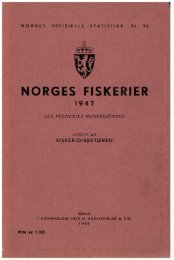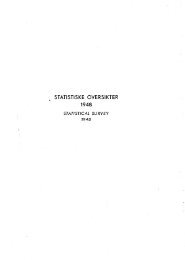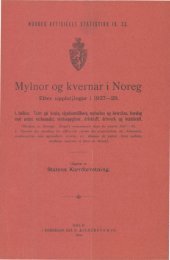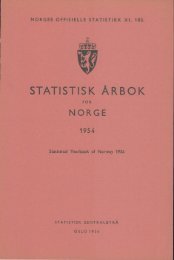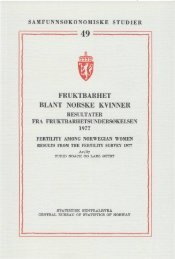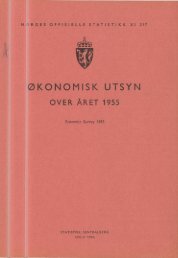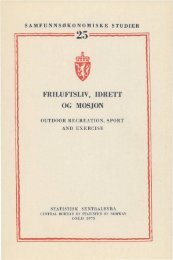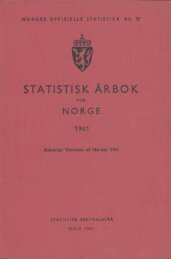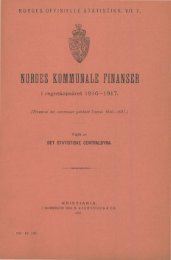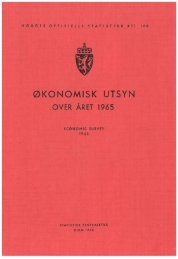Liquidity provision in the overnight foreign exchange market
Liquidity provision in the overnight foreign exchange market
Liquidity provision in the overnight foreign exchange market
You also want an ePaper? Increase the reach of your titles
YUMPU automatically turns print PDFs into web optimized ePapers that Google loves.
positive correlation between net purchases of F<strong>in</strong>ancial customers and changes <strong>in</strong> <strong>the</strong><br />
<strong>exchange</strong> rate. The coefficients of <strong>the</strong> two groups are not only similar <strong>in</strong> absolute value,<br />
but is also very stable. These f<strong>in</strong>d<strong>in</strong>gs lead us to conclude that <strong>the</strong> Non-F<strong>in</strong>ancial customers<br />
we observe fulfill requirement (a) above, while F<strong>in</strong>ancial customers do not. The<br />
fact that <strong>the</strong> <strong>foreign</strong> <strong>exchange</strong> rate and positions held by F<strong>in</strong>ancial and Non-F<strong>in</strong>ancial<br />
customers are co<strong>in</strong>tegrated suggest that <strong>the</strong> price effect is permanent.<br />
Second, requirement (b), that <strong>the</strong> presumed liquidity providers passively match<br />
changes <strong>in</strong> <strong>the</strong> demand and supply of o<strong>the</strong>rs, is tested us<strong>in</strong>g Granger causality. We f<strong>in</strong>d<br />
that <strong>the</strong> trad<strong>in</strong>g of F<strong>in</strong>ancial customers tends to forecast <strong>the</strong> trad<strong>in</strong>g of Non-F<strong>in</strong>ancial<br />
customers. This suggests that <strong>the</strong> Non-F<strong>in</strong>ancial customer group is not <strong>in</strong> <strong>the</strong> active end<br />
of trad<strong>in</strong>g.<br />
These results are not obvious. Four important issues might come to m<strong>in</strong>d. First,<br />
if <strong>the</strong>se are liquidity effects, how can <strong>the</strong>y be permanent? It is important to remember<br />
that it is not liquidity effects that cause <strong>the</strong> change <strong>in</strong> <strong>the</strong> <strong>exchange</strong> rate. The <strong>exchange</strong><br />
rate change is due to a portfolio shock by <strong>the</strong> F<strong>in</strong>ancial customers. We identify <strong>the</strong> supply<br />
of liquidity that meets this portfolio shock (more on <strong>the</strong> economic <strong>in</strong>tuition for <strong>the</strong><br />
permanent effect below). Second, it might seem counter-<strong>in</strong>tuitive that Non-F<strong>in</strong>ancial<br />
customers should provide liquidity. However, one should note that Non-F<strong>in</strong>ancial customers<br />
<strong>in</strong> our data behave like profit-takers; <strong>the</strong>y react to a change <strong>in</strong> <strong>the</strong> <strong>exchange</strong> rate.<br />
A liquidity provider, as used here, is one who enters <strong>the</strong> <strong>market</strong> as a reaction to <strong>the</strong><br />
action of o<strong>the</strong>rs. It is not necessary for <strong>the</strong> Non-F<strong>in</strong>ancial to perceive <strong>the</strong>mselves as<br />
liquidity providers.<br />
Third, it is clear that <strong>the</strong> group of F<strong>in</strong>ancial customers must be very diversified. It<br />
should conta<strong>in</strong> a spectrum of customers from hedge funds to portfolio managers. Especially<br />
hedge funds might use a range of trad<strong>in</strong>g strategies. If anyth<strong>in</strong>g, this could weaken<br />
3



